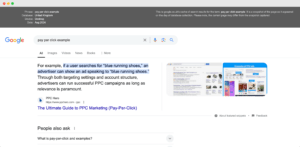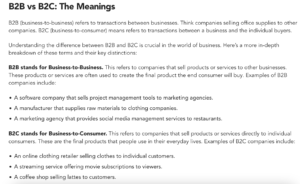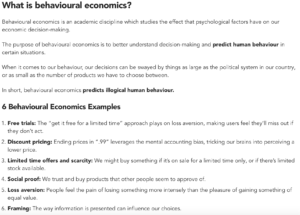
This experiment aims to determine whether directly addressing the main topic immediately after each subheading can enhance blog post performance. To achieve this, we will analyse high-performing blog posts, assess whether the content below the subheading matches the search intent, and implement necessary changes. By tracking key performance metrics, we will evaluate the impact of this approach on overall blog success.
Aligning content with subheadings offers several potential advantages. By clearly addressing the topic in each section, we can improve user experience by making content easier to skim and understand. This clarity can also make it easier for search engines to find the relevant content and keywords. And well-structured content with clear subheadings helps you secure featured snippets to bring in organic traffic.
Methodology
To conduct this experiment, we selected blog posts from Digivate based on the following criteria:
- Ranks for informational keywords within the top 20 positions on Google.
- The keywords currently hold a featured snippet that does not belong to Digivate.
Please note: Usually to rank for a featured snippet you need to rank on the first page of Google. However, we expanded the typical top 10 criterion to accommodate Digivate’s status as a small website with a relatively low domain authority (compared to those websites ranking for the specific keywords).
Data was sourced from Semrush. Semrush was used to analyse current rankings and to look at the current featured snippets for target keywords. Performance metrics tracked for this experiment are rankings and featured snippet acquisition.

Subheading-content alignment was assessed by looking at each subheading in relation to its corresponding content. A clear alignment was determined when the content below directly addressed the keyword within the subheading.
Modifications to selected blog posts included adding text, moving text around and adding subheadings to narrow down the content. The text we recommended adding was based off of the current featured snippet for that keyword.
Here’s an example of two of our modifications:
Example One: Keywords 1 & 2: “b2b and b2c meaning” and “b2b b2c meaning”
Blog post: B2H Marketing: The Human-Centric Shift In Business Strategies
Modifications
- Add an H2 saying like “B2B vs B2C: The Meanings”
- Add the recommended text below the heading
- Since this article only ranks on page 2 of Google we need to refresh, optimise, and expand the original content
The Recommended Text
B2B vs B2C: The Meanings
B2B (business-to-business) refers to transactions between businesses. Think companies selling office supplies to other companies. B2C (business-to-consumer) means transactions between a business and the individual buyers.
How it Looks on the Post

Example Two: Keyword 3: “behavioral economics examples”
Blog post: 9 Eye-Opening Examples of Behavioural Economics in Marketing
Modifications
- Add an H3 “6 Behavioural Economics Examples” in the “What is behavioural economics?” section
- Include the recommended text as a list
- Optional: another keyword that may have a snippet in the feature in the future is “what is bem”. In this section “How is behavioural economics used in marketing?” make sure you include information that answers that question
The Recommended Text
H3: 6 Behavioural Economics Examples
- Free trials: The “get it free for a limited time” approach plays on loss aversion, making users feel they’ll miss out if they don’t act.
- Discount pricing: Ending prices in “.99” leverages the mental accounting bias, tricking our brains into perceiving a lower price.
- Limited time offers and scarcity: We might buy something if it’s on sale for a limited time only, or if there’s limited stock available.
- Social proof: We trust and buy products that other people seem to approve of.
- Loss aversion: People feel the pain of losing something more intensely than the pleasure of gaining something of equal value.
- Framing: The way information is presented can influence our choices.
How it Looks on the Post

Experiment and Results
Before implementing modifications in April, the four selected blog articles exhibited the following rankings for five key target keywords across four articles on our blog.
After 3 months we took another look at the rankings for the target keywords so we could see if our changes had any effect on the rankings. Here’s what we found:
| Keyword | April Rank | August Rank | Change |
| B2b and b2c meaning | 13 | 15 | Down 2 |
| B2b b2c meaning | 17 | 20 | Down 3 |
| behavioral economics examples | 3 | 1 | Up 2 |
| content marketing writing | 15 | 7 | Up 8 |
| pay per click example | 16 | 1 | Up 15 |
What Did We Learn?
The table and chart above show the ranking changes for the five target keywords across the four blog articles between April and August. We can see that three keywords improved their rankings (became lower numbers), while two keywords dropped in rank (became higher numbers).
- The biggest improvement was for the keyword “pay per click example” in the article “Top 10 Most Creative & Best PPC Campaigns Of All Time,” which jumped from position 16 to position 1.
- The keyword “behavioral economics examples” in the article “9 Eye-Opening Examples of Behavioural Economics in Marketing” also saw a significant improvement, moving from position 3 to position 1.
- The keyword “content marketing writing” in the article “Content Marketing vs Content Writing: What Is the Difference?” improved from position 15 to position 7.
Despite the improvement in rankings, we haven’t managed to win any featured snippets for those keywords (yet).
SEO is a complex process, and it can be difficult to isolate the impact of any single change. However, the improvements in ranking for these keywords suggest that aligning content with subheadings may be a helpful strategy for improving SEO performance.
This is because when a user searches for a specific keyword, they have a clear intention or question in mind. By addressing that query directly and promptly under the relevant heading, you’re essentially providing an immediate answer to the user’s need. Google takes this improved user experience into account when ranking websites – and similar to when a user reads a blog post, when a search engine crawls it, it can also find the answers it’s looking for more promptly.
So, why did we see a negative change for two of the keywords?
Increased competition for the keywords could be a primary factor. New competitors entering the market or existing ones enhancing their SEO efforts might have pushed our article down the rankings.
Other factors:
- Keyword difficulty: The keywords “B2B and B2C meaning” and “B2B B2C meaning” are highly competitive and have a high keyword difficulty (meaning they are hard to rank for)
- Backlinks: A lack of high-quality backlinks to our article could be hindering its ranking potential vs. other articles with more links pointing to it.
- User behaviour: Changes in user search behaviour or preferences could affect keyword rankings.
We will continue to monitor the performance of these blog articles and track the ranking of other keywords to see if these trends continue. As we see new trends we will update this article and as we repeat the process with more keywords we will add that information in too.
Conclusion
Our experiment aimed to determine if directly addressing the main topic after each subheading could boost blog post rankings.
The results indicate a potential correlation between aligning content with subheadings and improved rankings. Three out of the five target keywords experienced significant ranking improvements after modifications were made. This suggests that providing direct answers to user queries within the content structure can positively influence search engine visibility.
However, it’s crucial to acknowledge that SEO is a complex interplay of various factors.
While the positive outcomes for the three keywords are encouraging, the negative movement of the other two highlights the importance of considering additional elements such as competition, keyword difficulty, and overall content quality. To draw more definitive conclusions, a larger sample size and a longer observation period would be beneficial.



